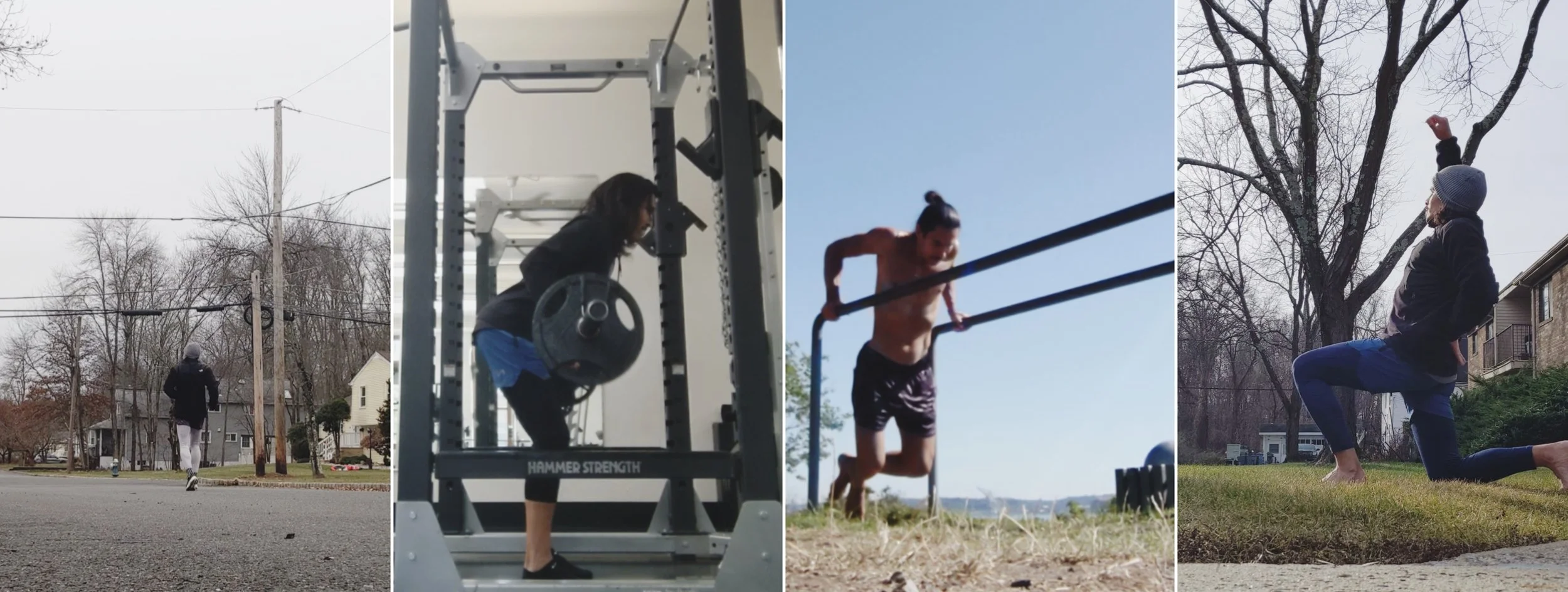MOVEMENT
Physical training has become an essential part of my life and what I get to do six to seven times a week. I have learned that exercise is one of the most important promoters of well-being and longevity, and I have experienced for myself its tremendous benefits. It continually enhances the way I feel - my mood, vitality, and immune system.
I believe that movement has the most carryover effects on the other factors of health that I try to focus on, as it directly impacts my eating, resting, and thinking habits.
Running, weightlifting, calisthenics, as well as stretching and mobility are the types of training that I prefer, enjoy, and perform at varying intensities on a daily basis - depending on how my body feels.
Ever since I began developing a passion for endurance running, it has become my main form of exercise. Running at least five to six miles a day, typically in the early morning, has been a habit of mine for the past few years. The volume tends to increase to eight to ten miles a day, with a longer run of twelve to fifteen miles once a week, while preparing for a marathon. On the other hand, during periods of recovery from marathons or other bigger efforts, volume decreases to two to three miles, if not only walking for at least a week or two. In terms of running pace, the vast majority of miles are “easy” - meaning that breathing is comfortable enough to be able to speak (also known as ZONE 2 cardio). Whereas one or two runs a week are more intense and a bit more demanding, which typically involve intervals - fast for shorter distances with recovery jogs in between.
RUNNING
Strength training is something I have done since I was a teenager and has been a constant in my life. I have done it mostly in conjunction with a sport - whether soccer or running - although there was a short period of time in which it was my only method of exercise, as I had become highly interested in bodybuilding and my goal was strictly to gain muscle mass. For the past number of years, while competing in soccer and most recently in my endurance running days, I have realized that incorporating weightlifting in my weekly movement routine is fundamental. Contrary to the belief that it may hinder performance in any given sport, I have found it to be rather supportive, for I feel stronger, and I am able to remain free of injuries, which is key to developing consistency and longevity.
At least three lifting sessions per week is the frequency that has been sustainable for me in the past several years. They are typically composed of push-pull super sets of upper and lower body exercises using sets of dumbbells, which are the equipment most readily accessible for me year-round. When I can get into a gym, my focus is primarily on compound movements using barbells, then also adding exercises requiring cable machines.
WEIGHTLIFTING
Body weight movements have not always been part of my training routine but have become a staple ever since I started experimenting with them. I never quite enjoyed them and preferred to work out using weighted equipment rather than simply body weight. When I decided to go without a gym membership and found myself having to simplify my strength training routine using minimal equipment at home or at nearby parks, I discovered how challenging and effective a calisthenics workout can be. I have found that body weight movements have helped me to develop greater whole-body strength, control, and flexibility.
Nowadays my weightlifting sessions are always complemented by a few calisthenic exercises such as pull-ups, push-ups, inverted rows, and dips. At the same time, strictly calisthenics workouts including upper and lower body movements are also part of my current weekly routine.
CALISTHENICS
Although it’s the least enjoyable aspect of training for me, I ensure that I take the time to do stretching and mobility exercises before and after training sessions. Whether doing a strength or cardio workout I can feel the difference it makes, as my body feels more primed to endure the session and then stimulated to start recovering. By making the mistake of neglecting it in the past, I have experienced minor injuries that required me to lessen the training intensity or even stop completely for several days.
I normally spend ten to fifteen minutes, pre and post exercise, on stretch and mobility. It includes a variety of upper and lower body static position holds of about 45 seconds, as well as dynamic controlled movements on the ground and utilizing resistance bands.
